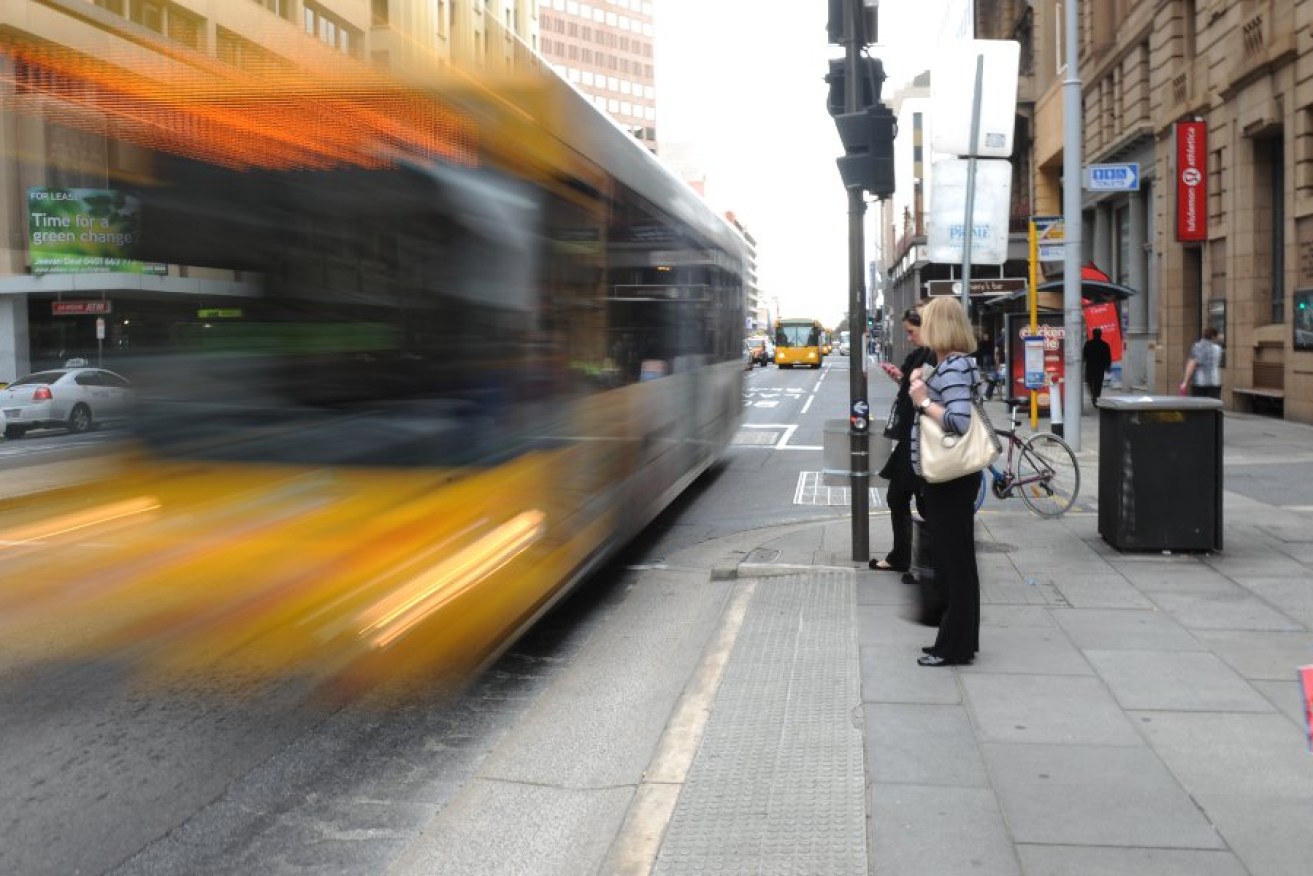Mapped: Public transport use across Adelaide

Adelaide Metro bus in Adelaide. Photo: Nat Rogers / InDaily
Adelaide’s public transport network is well-used by people in the inner suburbs, but is being shunned in the outer northern suburbs, an analysis by InDaily has found.
Another bright spot is the north-eastern suburbs, where the O-Bahn is the public transport network’s biggest success story, but the northern suburbs present a different picture.
A transport planning expert says the maps reflect the difficulties of operating a public transport network in a city with large areas of low-density sprawl.
SCROLL DOWN FOR INTERACTIVE MAPS
He also argues that, even in the inner-suburban areas, the relatively low urban density means Adelaide lacks the public transport options of denser cities.
INTERACTIVE: Total public transport journey-to-work users per head of population
Top Areas: Richmond, Goodwood-Millswood, Norwood, Edwardstown
The data uses the ABS’s journey to work data, which asks questions about the mode of transport taken to work on the day of the August 2011 Census.
The map plots this data, with colour shade representing transport use per head of population. Darker greens mean more transport use; lighter shades mean lower use per head of populaton.
The map uses the ABS’s statistical boundaries, which represent populations of between 3000 and 25,000 residents.
The data clearly indicates the most heavy take-up of public transport is in the inner suburbs – with several interesting notable exceptions including the areas of Walkerville, Toorak Gardens and St Peters-Marden.
Beyond the inner suburbs public transport trends to drop off on a fairly linear gradient, with the outer suburbs registered significantly lower rates of public transport usage.
Perhaps the sharpest drop-off comes between Mawson Lakes – a medium density housing estate built around a train line – and the suburbs further north, including Para Hills, Salisbury and out to Elizabeth. This is despite Elizabeth train station being centrally located in the suburb. [The Gawler train line has been subject to a number of closures of the past few years, which may have affected patronage.]
“The analysis highlights metropolitan Adelaide’s very low urban densities, which then translates into sparse public transit services spread thinly across metropolitan Adelaide, all of which encourages people to use their cars,” Dr Andrew Allan, a transport planning expert at the University of South Australia, told InDaily.
“Larger cities have the advantage of dense public transport services going through their inner cities by virtue of the fact that they are drawing patronage across much larger metropolitan areas than is the case in Adelaide.
“Adelaide by comparison has few inner suburbs with anything close to medium density – all of the southern inner suburbs have mostly suburban bungalows, many on large allotments; the inner eastern and northern suburbs are also largely conventional low density suburban development in character and the inner west (around Mile End), has only marginally higher densities, largely as a result of having town houses.
“It means that inner city residents in Sydney and Melbourne are theoretically spoilt for choice when it comes to public transport services, when you compare it with less dense cities like Adelaide and Canberra especially.”
INTERACTIVE: Total bus journey-to-work users per head of population
Top areas: Richmond, Norwood, Windsor Gardens, Payneham-Felixstow
When data is refined down to just bus journeys, it becomes clear how much weight our bus system is carrying. Buses are used to commute to work across Adelaide – again, with the inner suburbs registering higher per-head bus use.
Heavy bus usage can be seen all along the O-Bahn, which runs from the city to Adelaide’s north-eastern suburbs. Relatively heavy bus usage in areas like Redwood Park, Golden Grove and Modbury Heights may reflect the nature of the bus network in those areas, where many bus services are run to feed into the O-Bahn.
The map highlights the power of smart public transport infrastructure, Allan says.
“The signs of encouragement for increased public transit usage are that where you do provide transit rich services – e.g. the tram line and O-Bahn, and the upgraded rail services to Mawson Lakes – people appear to be more likely to use public transport to meet their commuting needs.
“Where you find public transport rich corridors, such as the buses and tram down to Glenelg, the Adelaide O-Bahn to the northeast and the rail corridor out to Mawson Lakes, public transport usage is relatively high for Adelaide.
“The other interesting hotspot is the zone around Windsor Gardens where despite the areas low density suburban character, there’s high public transport usage, which reflects the popularity of the Klemzig and Paradise O-Bahn interchanges.
“The surprise in this analysis is that the O-Bahn terminus at Tea Tree Plaza does not seem to register as being that popular, but then this might reflect the limited population that lives within that zone with it being dominated by commercial and retail development.”
INTERACTIVE: Total train journey-to-work users per head of population
Top Areas: Brighton, Hallett Cove, Largs Bay-Semaphore, North Haven
Of all the transport routes considered by this analysis, the train data shows the most variability with large swathes of Adelaide not recording a single train commuter.
While the data obviously reflects the distribution of Adelaide’s train lines, it is interesting to note the low popularity of the Gawler Line. Despite stations all the way along the line it only sees heavy usage in Mawson Lakes and Gawler.
However, it is possible these figures are linked to continuing works along the Gawler Line, which was closed in two stages as the line was electrified. The line was not closed on the day of the census in August 2011.




